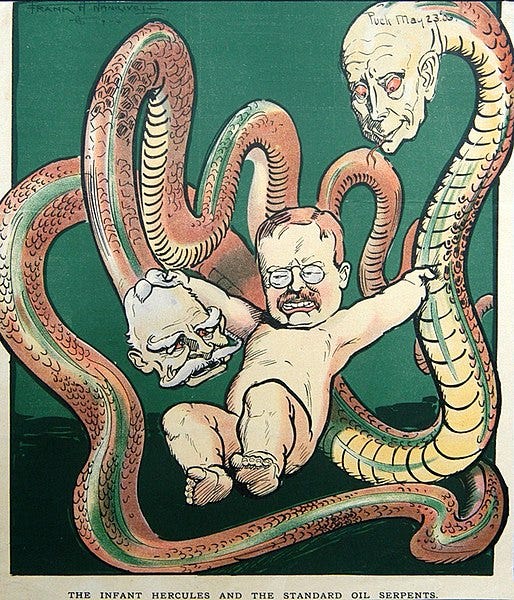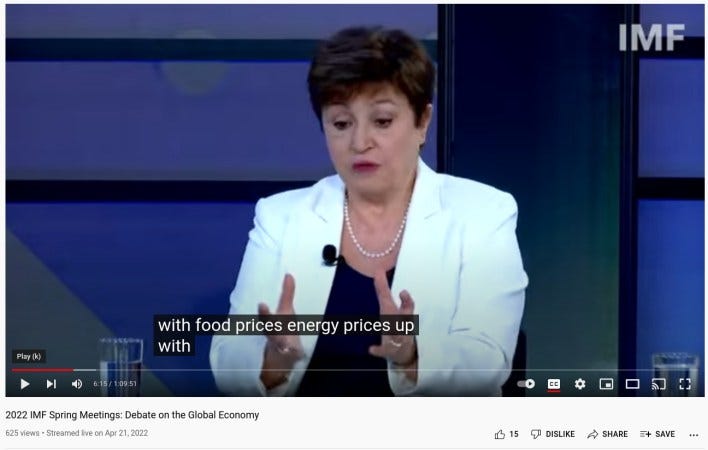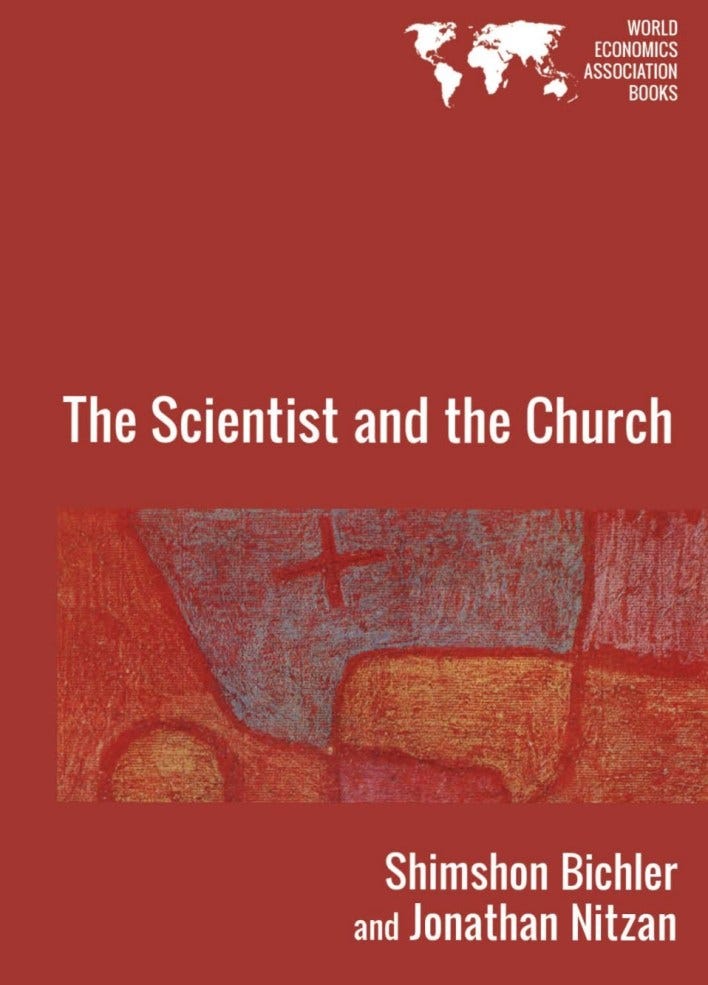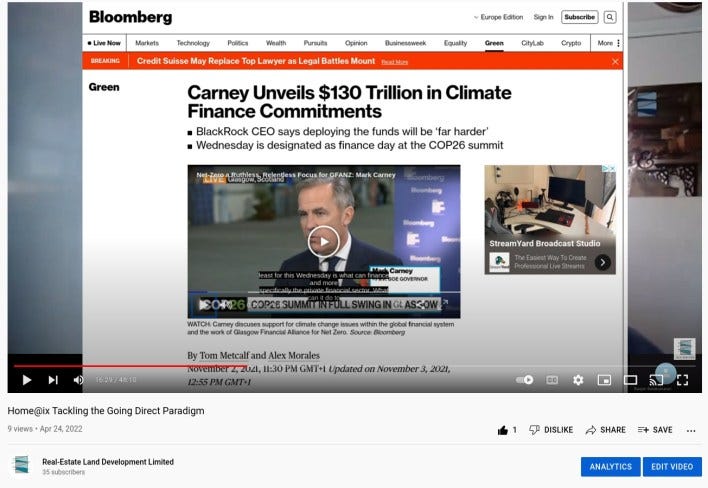Peak Bullshit. Shits fucked up and bullshit. “Don’t Look Up” (Irony)
PUBLISHED DATE:APRIL 27, 2022
I was chatting with my sister this morning about among other things Peter Hitchens's Daily Mail columns which are now only available to paid subscriptions effectively denying many of Peter’s readers the opportunity to read him.
We both remembered this film was it an establishment own goal in that it alerts people to the selfish motives of Elites rather than working as an allegory of the dangers of ignoring “The Science”.
I did a few blogs on the Allegory back-firing view my sister felt that the writer if not the producers wanted to draw people's attention to The Piper paying for the tune, I hope my sister is right about that.
Deja Vu all over again
My Estimation of and Journey around the Matrix. #Sue Supriano #RobertMoore #IanCrane #F. William Engdahl #WhatyaGonnaDo ROGERGLEWIS JANUARY 23, 2022 Foreword If fifteen years ago, when the USSR was collapsing, I had noticed a book on the shelves about “changing the world,” I imagine I would have passed it by. Such topics, I would have assumed, were for p…
My Estimation of and Journey around the Matrix. #Sue Supriano #RobertMoore #IanCrane #F. William Engdahl #WhatyaGonnaDo ROGERGLEWIS JANUARY 23, 2022 Foreword If fifteen years ago, when the USSR was collapsing, I had noticed a book on the shelves about “changing the world,” I imagine I would have passed it by. Richard Moore quoted in Sue Supriano interview on Steppin Outta Babylon radio November 2006 The Grub Street in Exile substack post has links to the original etc.
Peak Bullshit. Shits fucked up and bullshit. “Don’t Look Up” (Irony)
AUTHOR:ROGERGLEWIS PUBLISHED DATE:APRIL 27, 2022 7 COMMENTSON PEAK BULLSHIT. SHITS FUCKED UP AND BULLSHIT. “DON’T LOOK UP” (IRONY)
https://www.bitchute.com/video/EOFUH1KIAAzT/
there is no viable theory of value.
Marx’s labour theory of value rests on the elementary particle of socially necessary
abstract labour time – but that particle, while perhaps intuitively appealing in Marx’s
time when the joule was first invented, can no longer be identified and quantified in
today’s capitalism. And the situation is even worse with neoclassical value theory: the
elementary particle of this theory – the ‘util’ – was already deemed quantitatively
meaningless by the theory’s own founding fathers, and no neoclassicist has managed
to prove them wrong since.
The net result is that neoclassical and Marxist theories now hang on the thread of
cognitive dissonance. They conceive capitalism as a quantitative mode of consumption and production, but the material/productive units on which their theories depend
– the util and socially necessary abstract labour time – are entirely fictitious. They think
of capital as if it were a quantifiable economic entity, but the way in which they ‘measure’ this supposedly real entity is, in fact, completely arbitrary and forever irrefutable.
The authors are broadly convincing. They distinguish the oil era as one separated between “free flow” and “limited low.” During the period of free-flow, the oil majors literally owned the subsoil of Middle East countries. They profited with prices “being relatively low and stable.” The situation shifted sharply in the 1970s. Nations nationalized their own raw resources. The companies often became “service providers.” As a result, they lost direct control over prices. The consequence was a new limited-flow system, with prices politicized. OPEC quotas, with plenty of pushing and pulling at the hands of Western governments, made sure supplies were set only to what the “market” could bear. The distinction between direct control through property rights and indirect management through diplomacy is incredibly important.
But it is important to keep in mind that their notion of “free flow” refers to who, exactly, controlled the rate at which oil flowed, as well as the positive correlation between volume and profits. This periodization does not mean that production was not sabotaged. Nor do they mean that countries and corporations did not deliberately constrain supply during the earlier period. It simply means that the mechanisms of that constraint differed from those used after 1973. During that earlier era, for example, the majors allowed Iranian production to increase, but at a very precise rate related to what analysts thought would coincide with global demand. Meanwhile, Iraqi production endured constant sabotage. As leading petroleum economist John Blair noted in his classic study of the oil business, “From almost the beginning of its operations,” the Iraqi Petroleum Co. “not only suppressed production in Iraq…but went to considerable lengths to conceal that fact from the Iraqi government.”
https://notthegrubstreetjournal.com/?s=still+about+oil

Peak Oil and a Changing Climate
105,343 viewsJan 3, 2011
//www.mckinsey.com/industries/oil-and-gas/contact-us/~/media/10F6B7AEE60E489AAC4D4DF4DD51C1CA.ashx
Whenever you get two people interpreting the same data in different ways,” “that’s metaphysics.” is a quote from an interview published in Scientific American with Thomas Khun the coiner of the term and proposer of the concept of paradigm shifts.
https://blogs.scientificamerican.com/cross-check/what-thomas-kuhn-really-thought-about-scientific-truth/
We are not in the habit of stating the limits of which, what we believe and state as fact will remain to be true and stand up to scrutiny. We tend to state our claims as if they were absolutes much of the time.
Always of course begging the question were they gambling with their own skin in the game. ( Hugh Hendry anyone.)

The Way Out of the bottle. Solidarity- 12 Log 2-8
From the viewpoint of capital as power, penality and unemployment are not
distinct aspects of politics and economics, respectively. Instead, they are different
forms of capitalized resistance and sabotage. Human creativity is a positive form of
resistance to capitalist power, and the threat of unemployment is the means by which
the ruling class tries to strategically sabotage and subjugate this creativity to capitalist
ends. Similarly with crime and punishment. Illegality is a negative form of resistance
to capitalist power (a ‘primitive rebellion’, as Engels 1971 called it), and penality is the
major institution that keeps this resistance from undermining the capitalist creorder.
These forms of resistance and sabotage fit into the breadth and depth regimes of
capital as power (Nitzan 2001; Nitzan and Bichler 2009a: Chs. 15-17). In the past, we
argued that during a depth phase, the sabotage of stagflation (stagnation and inflation)
assists the process of ‘accumulation through crisis’ (Nitzan and Bichler 2002). Now,
since crime and punishment are tightly correlated with unemployment, we can see
how this additional form of sabotage kicks in. During the depth phase of the 1970s and
1980s, unemployment and inflation increased, as did crime and punishment.
Conversely, during the breadth phase of the 1990s, they all decreased.
And here we come to the enigma of Figure 5.https://www.econstor.eu/bitstream/10419/157975/1/bna-440_bn_tsatc_2015_wea.pdfDuring the systemic crises of the
1930s and 2000s, the tight correlation between penality and unemployment seems to
have broken down: in both periods, the sabotage of unemployment rose sharply; yet
crime and punishment, instead of rising in tandem, actually receded.
What could explain this enigma? One possibility is that some of the data we use
are incorrect or inaccurate. A second possibility is that our top-down presentation of
the data is too crude, and that a more refined set of proxies for unemployment, crime
and punishment will eliminate the anomaly. But there is also a third, substantive,
possibility, and that is that systemic crises alter the rules of the game. These crises not
only dent the resolve of the ruling class; they also change the class disposition of
criminals. Under the system of ‘business as usual’ (including its cyclical crises), the
poor feel that there is ‘no way out’. Without jobs, without dignity and with little
prospect for change, the only alternative is crime. But during a deep, systemic crisis,
there emerges another, transformational, alternative. This alternative is based not on
individual alienation and protestation, but on class solidarity; not on defying the
system through Quinney’s ‘crimes of resistance’ (1980), but on altering its very
structure. Perhaps it is the emergence of this democratic opening during a systemic
crisis that causes crime to drop despite soaring unemployment.12
12 The third possibility was suggested to us by the Israeli criminologist, Professor Jacob Reuven.
PIIGS IGNORANCE, PEAK OIL AND THE ROAD OUT OF SERFDOM
At 37.42, in my chat with Ranjan back in January, I was still puzzling over whether or not Mark Carney had “Fluffed” his lines at Cop 26, in our discussion over the weekend just gone I explain why I have now formed the conclusion that he did.
Ranjan and Roger Discuss 3 Strikes Swine Flu 1, 2 , 3 – Creorder Out of Covidstroika chaos. Never let a good myth go to waste , Population Population Population. Gatekeepers, Controlled Opposition, Useful idiots
RECORDED IN EARLY AUTUMN 2007 PEAK OIL : MYTH OR REALITY
Recorded in early Autumn 2007, Ian R Crane shared his insights into the deep geopolitical machinations of the Oil Industry and challenged the emerging ‘Peak Oil’ Cult. Eight months later the price of oil peaked at $147 per barrel, then crashed to $35 per barrel in November 2008. The parallels between 2008 and 2015 may well serve as an indicator of yet another imminent Global Financial Collapse!
Ah Grasshopper, Fear is the only Darkness.
BIOGENIC V. ABIOGENIC OIL: WILL WORLDWIDE PRODUCTION PEAK? – STANFORD S. PENNER, PHD (2006)
From DDP 24th Annual Meeting, August 5, 2006.
Professor Penner of U.C.S.D. contrasts Western and Russian views on whether oil is a renewable resource.
COL L FLETCHER PROUTY. THE DIRTY TRUTH ABOUT OIL.
THE DEVIL’S EXCREMENT.
don’t get fooled again.
This.
or the enduring
A Giant Sucking Sound,
Tides of the Dollar Moon
A planet to its Star must look
The planet no less needs its moon.
As the Sun is the store of energy, New.
The moon drives and regulates currents,
of the tides, time and the nature of things.
That Golden Orb gives all
That silvery Moon regulates all
Both work together even as the other
Seemingly sleeps and yet currents
of the tides, Time and the nature of things pass.
On the nature of Man-made things
On a standard of gold which
Jennings would not be crucified upon,
That cross Of Gold-alone hard food of Midas.
No tides to complement the Orb
For Silver was its currency,
the Silvery moon to that crosses Golden Sun
which means of exchange fed the common man
The Silver Moon drives and regulates
Currencies of the tides, Time and the nature of things.
Time passed and Man forsakes the Golden Orb
and its silvery moon. No credit he gave
to drivers of Tides, Time and the nature of things
Fiat of imperial rule enforces debts,
new tides in political Economy.
FIAT dictates the new tides of Commerce.
Ephors of debt above and astride the law.
No silvery moon, complementary to the Golden Orb.
There are no tides by means of which the common man
may be fed. Hard food of Midas alone- Starvation.
King Kanute Like those ephors
wave bidding the advancing tide backwards
Still, they advance tides in a tsunami of debt
Tides of a Dollar moon by fiat
Hegemonic Tides of the Dollar Moon.
Roger G Lewis (2016)
Bi-oilism.Petro/CarbonDollar Standard
ps://en.wikipedia.org/wiki/The_Fear_Index
https://webbrain.com/brainpage/brain/DF9DB595-A602-0BF0-DF0D-24BD4E25F6DF#-523
rogerglewison February 21, 2020 at 8:49 am said:Your comment is awaiting moderation.
This JP Morgan report is rather good
Mountains and Molehills. The Green New Deal mandates zero net emissions for the US by 2030 for the entire energy sector (not
just from electricity generation), and does so while phasing out nuclear power and relying heavily on carbon sequestration by
forests. This sets a goal that cannot be achieved. At best, the Green New Deal is a slogan to galvanize support for change; at worst,
it’s a sign of how little work its proponents have done. This year’s paper gets into the details of where energy comes from, how it’s
used, and the de-carbonization challenges facing the world’s industrialized and emerging economies. Additional topics include the
latest research on wildfi res, and Trump’s War on Science.
re is every reason to doubt the BBC’äs report on the new report, The BBC and Roger Harribin are alarmist extremists, there’s no sugar-coating that pill or indeed the same conclusion of Mr Monbiot at the Guardian.
Jamie Dimons Report last Spring (2019)
Mark Carney and Michael Bloomberg are photographed at the top of the news page of The Producers of the report the BBC are dishonestly referring to as JPMorgan, the group is independent of JPM apparently.
That the Central Banking cartel is pushing carbon credits and a carbon-based taxation/Debt system to replace the current Broken system is undoubted, This is Green Washing, Clive Spash is the go-to on the impossible contradictions engendered in this new elitist fix to keep the rest of humanity in debt bondage.
https://www.fsb-tcfd.org/about/#
This is about saving the Big Banking cartel not about saving the environment or indeed prosperity.
Yumpu channel embeds appear in personal blogs I ( Roger Lewis) have compiled over the past few years.
Each group has its own economic interests and perspective foremost when it analyses the economy and promotes a particular viewpoint. Politicians, economists, and business people rarely promote analysis that conflicts with their group interests. Clarity and analytical integrity generally work against private interests and are usually absent.
In an attempt to seek out and further the public interest, even where this may conflict with the privileged private interests which usually dominate the analysis and debate in corporate discourse. I would ask the easily shocked to consider that the uncompromising approach in This video will pose a major challenge to those who have learned their analysis exclusively through channels devoted to promoting privileged and usually private interests, and must “unlearn” erroneous but pervasive assumptions
https://notthegrubstreetjournal.com/2022/04/27/peak-bullshit-shits-fucked
What it means to be a disrupter in the BigTech/Ego Machine complex , as with so much else has become corrupted or at the least the meaning has been inverted.
These crises not only dent the resolve of the ruling class; they also change the class disposition of
criminals. Under the system of ‘business as usual’ (including its cyclical crises), the
poor feel that there is ‘no way out’. Without jobs, without dignity and with little
prospect for change, the only alternative is crime. But during a deep, systemic crisis,
there emerges another, transformational, alternative. This alternative is based not on
individual alienation and protestation, but on class solidarity; not on defying the
system through Quinney’s ‘crimes of resistance’ (1980), but on altering its very
structure. Perhaps it is the emergence of this democratic opening during a systemic
crisis that causes crime to drop despite soaring unemployment.
a third possibility was suggested to us by the Israeli criminologist, Professor Jacob Reuven.
A New Global Frontier for Finance
The 1980s opened a new financial phase that became yet another disciplining mechanism.22
Here it was not structural adjustment programs but financial adjustment crises. Since the
1980s there have been several financial crises, some famous, such as the 1987 New York
stock market crisis and the 1997 Asian crisis. And some obscure, such as the individual
country financial crises that happened in over 70 countries in the 1980s and 1990s as they
deregulated their financial systems, mostly under pressure from global regulators aiming at facilitating the globalizing of financial markets.
Conventional data show the post-1997 financial crisis period to be a fairly stable one,
until the current crisis. One element in this picture is that after a country goes through an
‘adjustment’ crisis, ‘stability’ (and prosperity!) follow. This then produces a representation
of considerable financial stability, except for a few major global crises, such as the dotcom crisis. A much mentioned fact regarding the current 2007 – 2008 crisis intended to
show that the system is fine, is that in 2006 and 2007, 124 countries had a GDP growth
rate of 4% a year or more, which is much higher than that of previous decades. The suggestion is then that the 2007 – 2008 crisis is precisely that—an acute momentary event, but that
the system is fine.
But behind this stability lies a savage sorting of winners and losers, and the fact that it is easier
to track winners than to track the slow sinking into poverty of households, small firms, and
government agencies (such as health and education) that are not part of the new glamour
sectors (finance and trade). The miseries these adjustment crises brought to the middle sectors
in each country and the destruction of often well-functioning economic sectors is largely an
invisible history to the global eye. These individual country adjustment crises only intersected
with global concerns and interests when there were strong financial links, as was the case
with the 1994 Mexico crisis and the 2001 Argentine crisis. Further, when these miseries
became visible, as when members of the traditional middle class in Argentina went on food
riots in Buenos Aires (and elsewhere) in the mid 1990s—after adjustment!—something
unheard of in Argentina, and which took many by surprise.
Besides the very partial character of post-adjustment stability and the new ‘prosperity’ much
praised by global regulators and global media, there is the deeper fact that ‘crisis’ is a structural
feature of deregulated, interconnected, and electronic financial marketsWhat stands out in this phase that begins in the 1980s is that global and adjustment crises had
the effect of securing the conditions for globally linked financial markets and the ascendance of
a financial logic organizing larger and larger sectors of the economy in the global North. In
this process large components of the non-financial economy in these countries were ruined.
24
In what follows I argue that the specific way of using the sub-prime mortgage in the 2001 – 2007
period makes it a dangerous instrument that is likely to be used worldwide over the next decade. It
The complexity of the financial innovation was a series of products that de-linked
sub-prime sellers and investors’ profits from the creditworthiness of consumer home mortgage-buyers. Whether the mortgage is paid matters less than securing a certain number of
loans that can be bundled up into ‘investment products’. The crisis of home-buyers was not a
crisis for financial investors, even though millions of middle and working class families now
live in tents in the US. For finance it was a crisis of confidence. But it showed the importance
of the systems of trust that make possible the speed and orders of magnitude of this financial
system. The crisis of home-owners (valued at a few hundred billion dollars) was the little tail
that dented the enormous dog of trust in the financial system.
is important to emphasize that the viral infection of sub-prime mortgages originated in the
United States but spread to other countries via the globalization of financial markets. This spread
was helped by the fact that non-national investors are, as a group, the single largest buyers of
some of the weakest types of mortgage instruments. Together with banks, non-national mortgage
buyers are over a third of all sub-prime mortgage holders. Foreign ownership strengthens the
potential for spill-over effects well beyond the United StatesOne way of thinking of this systemic deepening is as the expansion of the operational space
for advanced capitalism—it expels people both in the global South and in the North even as it
incorporates spaces. The devastated economies of the global South subjected to a full decade or
two of debt servicing, are now being incorporated into the circuits of advanced capitalism
through the accelerated acquisition of millions of hectares of land by foreign investors—to
grow food and extract water and minerals, all for the capital investing countries. This also
holds for such a radically different instance as the sub-prime mortgage crisis, a largely global
North dynamic. I see the sub-prime mortgage as extending the domain for high finance but in
a way that delinks the financial circuit from the actual material entity that is the house, and
hence from the neighborhood, and from the people who got the mortgage. All of these materialities are excluded from this type of articulation with high-finance—which means that the
devastated neighborhoods are expelled from what are, strictly speaking, also traditional circuits
of capital. It is akin to wanting only the horns of the rhino, and throwing away the rest of the
animal, devaluing it, no matter its multiple utilities. Or using the human body to harvest
some organs, and seeing no value in all the other organs, let alone the full human being—it
can all be discarded. But unlike the clear realignments we see in vast stretches of the global
South, it is not clear how these devastated urban spaces in the global North will be incorporated
into the circuits of advanced capitalism.
This systemic shift signals that the sharp increase in displaced peoples, in poverty, in deaths
from curable illnesses, are part of this new phase. Key features of primitive accumulation are at
work, but to see this it is critical to go beyond logics of extraction and to recognize the fact of
systemic transformation, with its system-changing practices and projects—the expulsion of
people that transforms space back to territory, with its diverse potentials.24 We saw this also in the 1997 Asian financial crisis which destroyed thousands of healthy manufacturing firms in
South Korea. These firms had a global demand for their products, with the workforces and the machines. Yet
they had to close because credit dried up, preventing them from paying for all the up-front costs of production,
and causing the unemployment of over a million factory workers.
25 The financial deepening of economies has become one of the major dynamics characterizing advanced economies.
The ratio of global financial assets to global gross domestic product was nearly 350% in 2006. The number of
countries where financial assets exceed the value of their gross national product more than doubled from 33 in
1990 to 72 in 2006 (McKinsey & Company, 2008). Securitizing a broad range of types of debt is a key vehicle for this financial deepening. The extension of securitization into consumer debt, including mortgages, took off in
the 1980s in the US. The sharp growth of mortgages to enable the massive housing construction boom in developed
countries in the decades following World War II produced a vast money pool, which became a prime object for
securitization in the 1980s. Deregulation became the critical step to enable securitization: mortgages had to be
pulled out of their protective encasements—that is, pulled out of millions of small credit unions and hundreds
of highly regulated banks. In The Global City (Sassen, 1991, see generally ch. 4) I examined how this generated
a series of innovations—new types of mortgage instruments, of which the current generation of so-called
structured-investment instruments is but the latest. The overall effect was a vast expansion of credit in the
mortgage sector.
26 The trends in financial globalization point to geopolitical shifts. The US is still the largest financial power with
$56.1 trillion assets, almost a third of the world’s financial assets. Europe’s Eurozone financial markets were
almost $40 trillion, and including the UK’s $10 trillion and Eastern Europe’s $1.4 trillion puts Europe close to
the US. The Euro is becoming a strong alternative global currency to the dollar, with the value of euro currency
in circulation surpassing the latter in mid-2007; it is also the top currency for the issuing of international bonds.
Japan, China, India, and several other Asian countries are a fast growing third financial block. The composition
of financial assets in these major national and regional financial markets varies sharply. The largest components
in the US are equity securities and private debt securities, which together account for 70% of the financial
market. In contrast, in China, bank deposits account for 55% of financial assets
The Road to Fascism: For a Critique of the Global Biosecurity State (1. The Return of Fascism)
The Road to Fascism: For a Critique of the Global Biosecurity State (2. Eternal Fascism)
The Road to Fascism: For a Critique of the Global Biosecurity State (3. The Fascist State)
Under Capitalism: Second Manifesto of Architects for Social Housing
4. Power for the Sake of Power4.1. The Mega-Machine
Begin with Lewis Mumford. His book Technics and Human Development: The Myth of the Machine (1967) offers a novel interpretation of the early rise of power civilizations – or states – in the Fertile Crescent. The rulers of these ancient states, he argues, discovered the eternal cosmos and began to unlock some of its secrets, and this breakthrough has had far-reaching dialectical consequences. On the one hand, it enabled those rulers to leverage energy in ways that were previously unimaginable, while on the other, it showed them that, compared to the vast cosmos, they themselves were utterly insignificant. The result was a massive cognitive dissonance – an acute tension between infinity and nothingness, creation and termination, omnipotence and mortality – and according to Mumford, this dissonance subjected those early civilizations to a totally new obsession: power for the sake of power.
To manifest their newly found prowess while alleviating their fear of death, the rulers of these societies started to play god. And they did so, says Mumford, by constructing a social ‘mega-machine’, a highly mechanized hierarchical structure that sought to mirror their own cosmos and make them – the mega-machine’s overlords – appear omnipotent and immortal.
The visible footprints of this mega-machine were phenomenal by prehistoric standards. The subjects of the mega-machine were forced to toil in the fields, dig canals, build complex irrigation systems and large granaries, construct huge palaces, temples and megalomaniacal graves and, last but not least, become cogs in large standing armies and palatial bureaucracies. Moreover, their endeavours mobilized energy at levels that earlier Palaeolithic and Neolithic societies could not even fathom. But according to Mumford, these were all means to an end. The ultimate goal was not to capture energy or transform the physical environment, but to make the mega-machine’s rulers feel almighty, divine and, above all, eternal. It is not for nothing that the Epic of Gilgamesh – perhaps the world’s first written myth – is about a ruler’s quest for immortality (Mitchell 2004).
Exegi Monumentum
By A.S. Pushkin
Translated by A.Z. Foreman
Click to hear me recite the original RussianWe heard him say, “I will destroy this temple that is made with hands, and within three days I will build another made without hands.”
-Mark 14:58I’ve reared a monument not built by human hands.
The public path to it cannot be overgrown.
With insubmissive head far loftier it stands
Than Alexander’s columned stone.No, I shall not all die. My soul in hallowed berth
Of art shall brave decay and from my dust take wing,
And I shall be renowned while on this mortal earth
A single poet lives to sing.Tidings of me shall spread through all the realm of Rus
And every tribe in Her shall name me as they speak:
The haughty western Pole, the east’s untamed Tungus,
North Finns and the south steppe’s Kalmyk.And long shall I a man dear to the people be
For how my lyre once quickened kindly sentiment,
I in a tyrant age who sang of liberty,
And mercy toward fallen men.To God and his commands pay Thou good heed, O Muse.
To praise and slander both be nonchalant and cool.
Demand no laureate’s wreath, think nothing of abuse,
And never argue with a fool.November 5, 2016
NOVEMBER THE 5TH, BONFIRES FLAMES AND EMBERS ( A POEM)
November The 5th.
Bonfires Flames and Embers
Around the bonfires stand communities
Children Burn Sparklers and Adults Candles
Effigies atop the bonfire fear the flames
At the seat of the Fire Embers Accumulate
Dreaming at Home Communities retire
Slumber hangs over the Town
The Bonfire smolders unobserved
Effigies, Sparklers and Candles All Embers Now
Flames lick the skies spectacular
Sparklers delight and perform fleetingly
Candles support but one fragile flame
Embers , wax and Magnesia
Calliopsis or Magnesia fueled from embers
The Health of the embers combustible flames
Who celebrates the embers endeavors
Who sees the symbiosis of the combustion and the fuel
All fate leads into the embers
All Embers fate to blow as dust
All Flames from the embers driven
Do the flames celebrate the embers for their finery?
—












